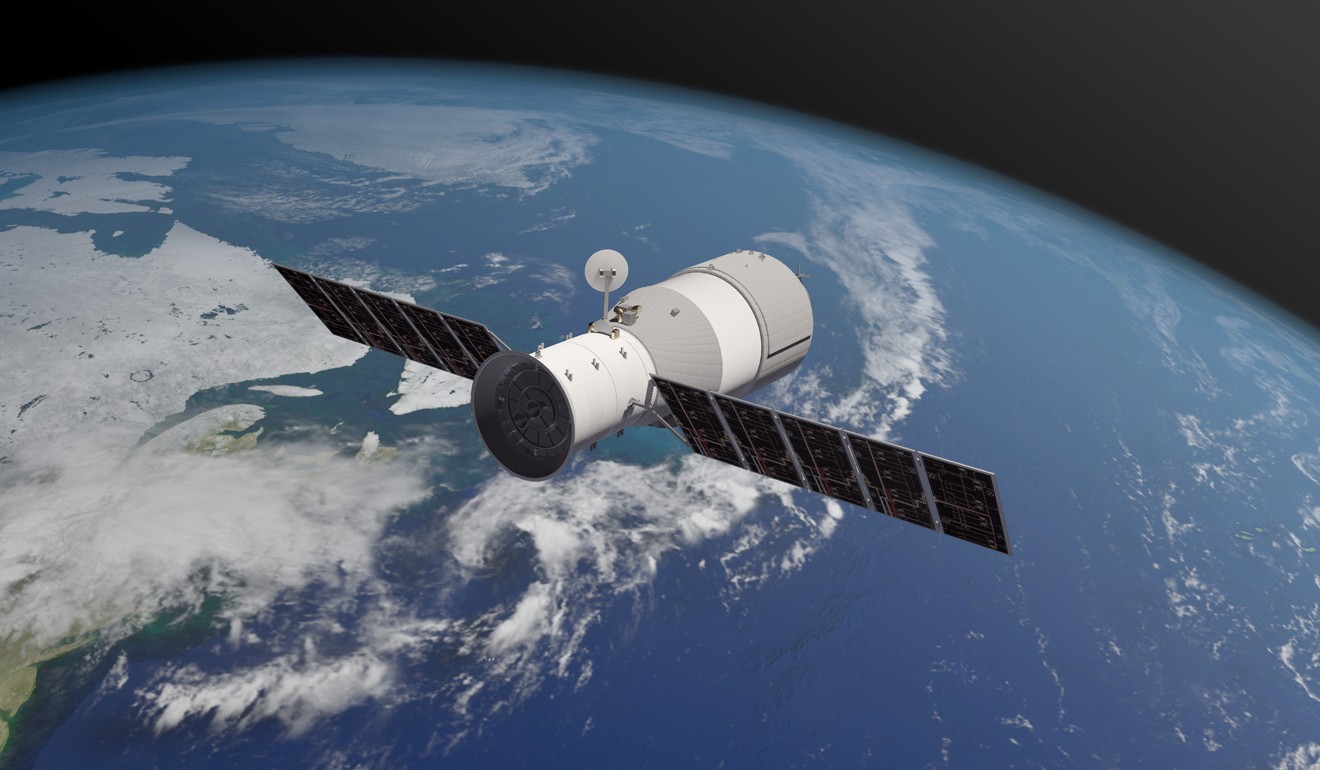
China’s Tiangong-1 space lab finally returns to Earth, burning up over South Pacific
Tiangong-1, China’s experimental space lab, re-entered the Earth’s atmosphere over the South Pacific on Monday morning

Tiangong-1, China’s experimental space lab, re-entered the Earth’s atmosphere at around 8.15am Hong Kong time (00.15 GMT) on Monday, China Manned Space Engineering Office (CMSEO) said.
It re-entered in the central region of the South Pacific, the CMSEO said.
The space lab was mostly burnt up in the atmosphere, according to the monitoring and analysis of the Beijing Aerospace Control Centre and relevant organisations, Xinhua reported.

Tiangong-1 was launched on September 29, 2011 and ended service in March 2016. It has docked with Shenzhou-8, Shenzhou-9 and Shenzhou-10 spacecraft, and undertaken a series of tasks, making important contributions to China’s manned space programme.
The eight-tonne space lab’s re-entry into Earth’s atmosphere had previously been predicted to happen some time “between March 31 and April 4, 2018”, according to the China Manned Space Engineering Office on March 26.
The March 26 announcement was the first time Chinese authorities admitted that the spacecraft was out of control in its fall back to Earth. The exact timing of the space lab’s return to Earth was fine-tuned over the following days.
Beijing had said there was no need for concern as it was unlikely to do any damage on the ground.
NW of Tahiti - it managed to miss the 'spacecraft graveyard' which is further south! pic.twitter.com/Sj4e42O7Dc
— Jonathan McDowell (@planet4589) April 2, 2018
Dr Zhu Jin, director of Beijing Planetarium, said the chances of anyone being hit by a piece of falling debris were lower than those of winning the lottery. The Aerospace Corporation put the odds of someone being hit at less than one in a trillion.
The Tiangong-1, which means “Heavenly Palace 1” in Chinese, was launched into orbit on September 29, 2011. It was to carry out docking and orbit experiments as part of China’s ambitious space programme aimed at placing a permanent station by the early 2020s.
The 10-metre-long craft, about the size of a school bus, cost hundreds of millions of yuan to build. The laboratory comprised several modules and was able to support up to three astronauts for two weeks at a time.
In its lifetime it was involved in six rendezvous and docking missions with manned Shenzhou spacecraft, and made “significant contributions to the development of China’s manned space mission” space authorities said.
On March 16, 2016, Tiangong-1 terminated its data service, officially ending the mission and starting its orbital decay.
Nasa’s 85-tonne Skylab space station is the largest spacecraft ever to make an uncontrolled return to Earth. Several large pieces of debris from it crashed into the Australian town of Esperance in 1979.
Here’s how our final #Tiangong1 prediction stacks up against the actual reentry data. We had an error of 14 minutes, which was well within our window of +/- 1.7 hours. Thanks for following along with us this past week. pic.twitter.com/t5kDEJa0jM
— TheAerospaceCorp (@AerospaceCorp) April 2, 2018